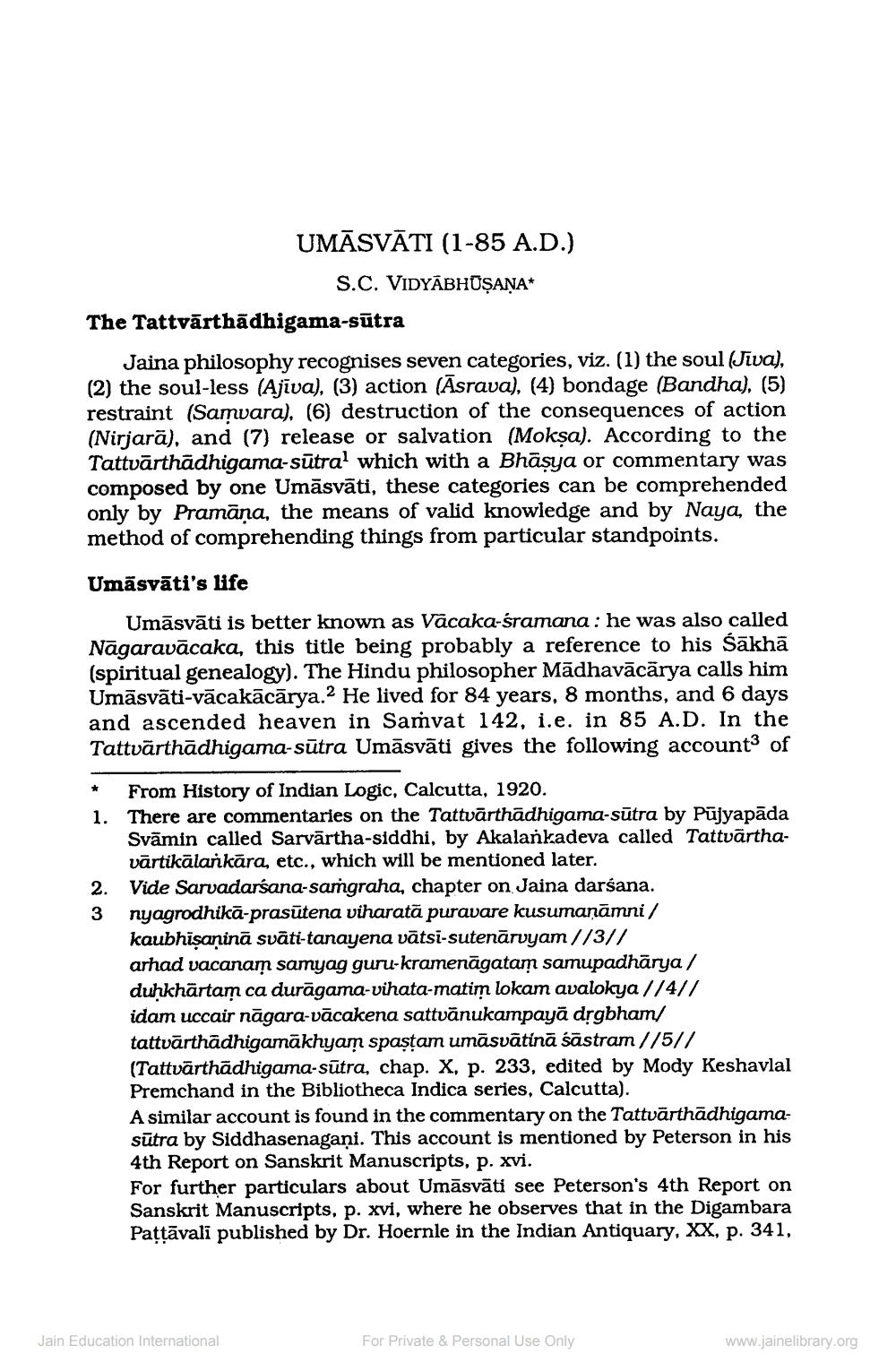________________
UMĀSVĀTI (1-85 A.D.)
S.C. VIDYABHUṢANA*
The Tattvärthādhigama-sūtra
Jaina philosophy recognises seven categories, viz. (1) the soul (Jiva), (2) the soul-less (Ajiva), (3) action (Asrava), (4) bondage (Bandha), (5) restraint (Samvara), (6) destruction of the consequences of action (Nirjarā), and (7) release or salvation (Mokṣa). According to the Tattvārthadhigama-sūtra1 which with a Bhāṣya or commentary was composed by one Umāsvāti, these categories can be comprehended only by Pramāṇa, the means of valid knowledge and by Naya, the method of comprehending things from particular standpoints.
Umäsväti's life
Umāsvāti is better known as Väcaka-sramana: he was also called Nagaravācaka, this title being probably a reference to his Śākhā (spiritual genealogy). The Hindu philosopher Madhavācārya calls him Umāsvāti-vācakācārya.2 He lived for 84 years, 8 months, and 6 days and ascended heaven in Samvat 142, i.e. in 85 A.D. In the Tattvärthadhigama-sutra Umāsvāti gives the following account3 of
* From History of Indian Logic, Calcutta, 1920.
1. There are commentaries on the Tattvārthadhigama-sūtra by Pujyapāda Svämin called Sarvārtha-siddhi, by Akalankadeva called Tattvärthavārtikālankara, etc., which will be mentioned later.
3
2. Vide Sarvadarsana-samgraha, chapter on Jaina darsana. nyagrodhika-prasutena viharata puravare kusumaṇāmni/ kaubhiṣaṇinā svāti-tanayena vātsi-sutenārvyam//3// arhad vacanam samyag guru-kramenāgatam samupadharya / duḥkhartam ca durāgama-vihata-matim lokam avalokya //4// idam uccair nagara-vācakena sattvānukampayā dṛgbham/ tattvärthadhigamakhyam spaṣṭam umāsvātinā sāstram //5// (Tattvärthadhigama-sutra, chap. X, p. 233, edited by Mody Keshavlal Premchand in the Bibliotheca Indica series, Calcutta).
A similar account is found in the commentary on the Tattvärthadhigamasutra by Siddhasenagani. This account is mentioned by Peterson in his 4th Report on Sanskrit Manuscripts, p. xvi.
For further particulars about Umāsväti see Peterson's 4th Report on Sanskrit Manuscripts, p. xvi, where he observes that in the Digambara Paṭṭāvali published by Dr. Hoernle in the Indian Antiquary, XX, p. 341,
Jain Education International
For Private & Personal Use Only
www.jainelibrary.org




